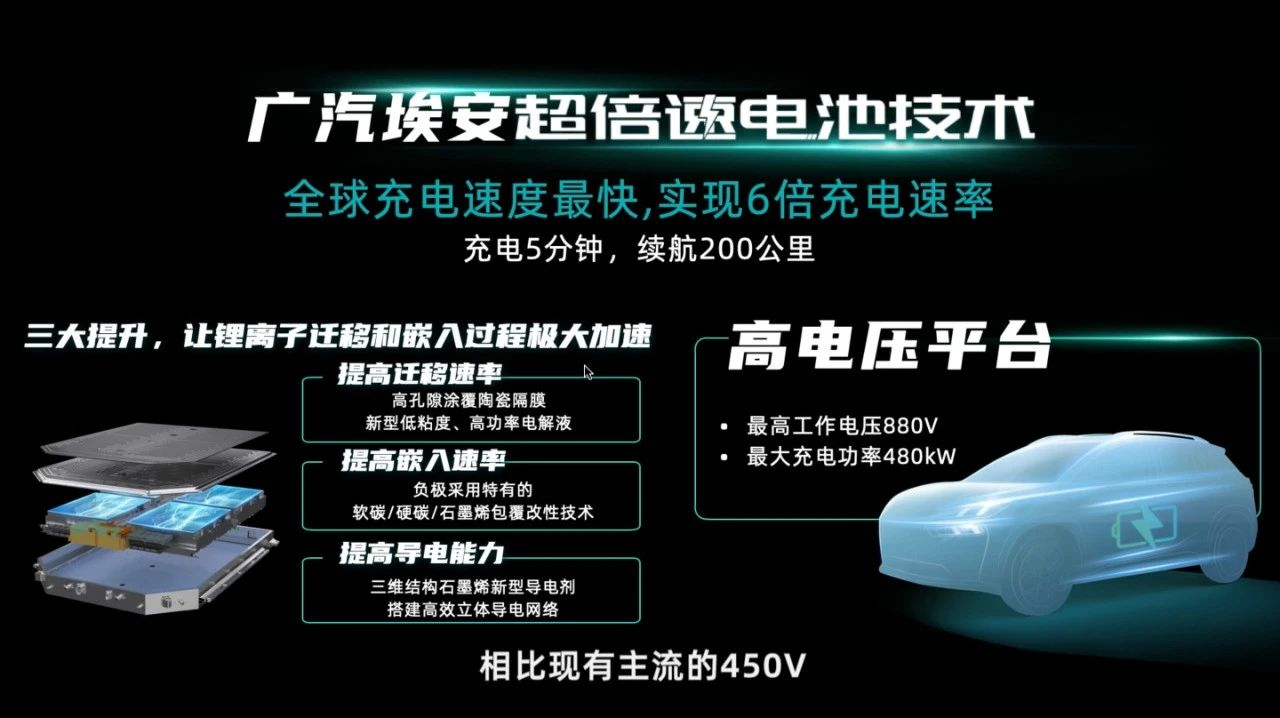Author: James Yang Jianwen
“Charge your car as fast as you fill up your tank.”
This is the slogan of the GAC Aion V A480 fast-charging station launch event.
This sentence immediately caught my attention: Is GAC Aion V exaggerating?
Ultra-Fast Battery Technology
“Globally fastest charging.” This is how GAC Aion V describes its ultra-fast battery technology (PS: Is this not violating advertising laws?)
To understand how to charge faster, we first need to understand the working principle of batteries. During charging, lithium ions move from the positive electrode through the separator and electrolyte to the negative electrode, including three processes of extraction, migration, and embedding. The more lithium ions that move and embed in a unit of time, the faster the charging speed.
However, the low migration speed and embedding efficiency of lithium ions are the two key obstacles to improving charging efficiency.
To solve these problems, GAC Aion V has conducted a large number of material formulation and process design verifications in multiple fields such as positive and negative electrode materials, electrolytes, separators, and conductive agents.
After 7 years of research, GAC Aion V has achieved technological breakthroughs: using high-porosity coated ceramic separators and new low-viscosity high-power electrolytes to reduce the resistance of electrolyte ion migration and increase migration rate; using a unique soft carbon/hard carbon/graphene encapsulation modification technology to increase embedding rate of the negative electrode; adopting a three-dimensional graphene new conductive agent to build an efficient three-dimensional conductive network to improve conductivity.
At the same time, GAC has mastered the independent research and development of 3D graphene (3DG) preparation technology and formed a complete patent portfolio, with a certain first-mover advantage. According to the official statement, this 3D graphene material has achieved stable mass production and controllable cost (the production cost is only 1/10 of the conventional preparation method).
Another benefit resulting from this technology advancement is the adaptation to a stronger 880V high-voltage platform (compared to the 800V high-voltage platform used by Porsche Taycan), which can achieve a maximum charging power of up to 480 kW.
In a real-world test in July of this year, from 30% to 80% charged in less than 5 minutes (4 minutes and 50 seconds) with charged power of 35.1 kWh, and peak power of 480 kW.
At this year’s Hundred People’s Meeting, the Chairman of GAC Group, Qinghong Zeng, announced that the GAC graphene-based super-fast charging battery has entered the stage of mass production testing and will be first used in AION V, with an initial batch production scheduled for September this year.
In other words, we will soon see the AION V with peak charging power of 480 kW?
A480 Super Charger with the Highest Charging Power
Meanwhile, GAC Aion has launched the world’s highest charging power supercharger, which is compatible with the new graphene-based battery.
The A480, the supercharger launched by GAC Aion. “A” represents AION, which also represents A-level high performance and 480 represents the world’s highest 480 kW charging power. The gun line uses lightweight liquid-cooled cables for more flexibility.
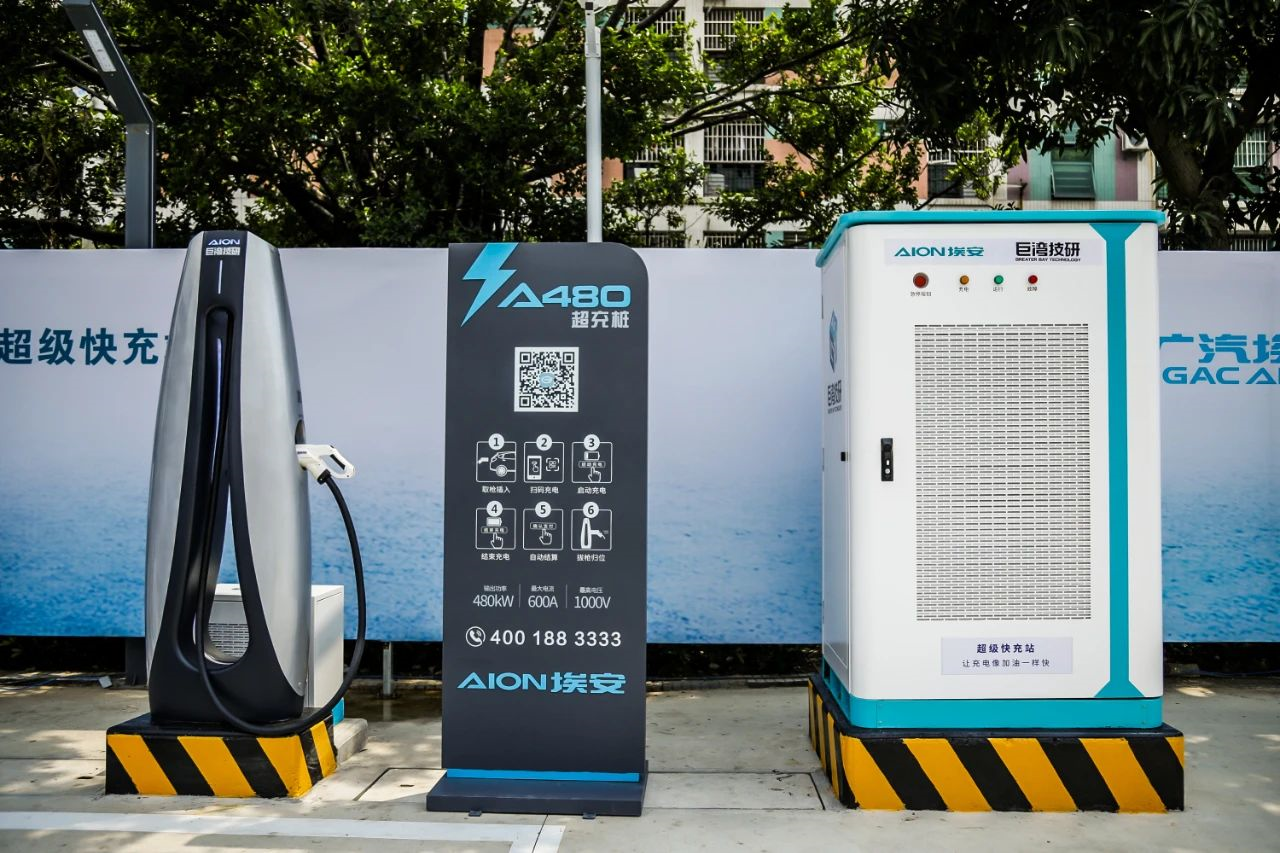
By comparison, Tesla V3 Supercharge has a peak charging power of 250 kW. According to Elon Musk, V3 Supercharge’s peak power will now increase to 300 kW, and the next generation V4 will peak at 350 kW. The extreme sci-fi’s 360 kW ultra-fast charging, 5 minutes of charging and 120 km of mileage, while the ideal car is preparing for fast charging technology of 400 kW.
By comparison, GAC Aion has indeed achieved the highest level in the industry.
One small detail: This supercharger can support a maximum current of 600 A and a voltage of 1000 V, meaning the peak charging power of this charger can reach 600 kW, and the current 480 kW is not its complete capability.
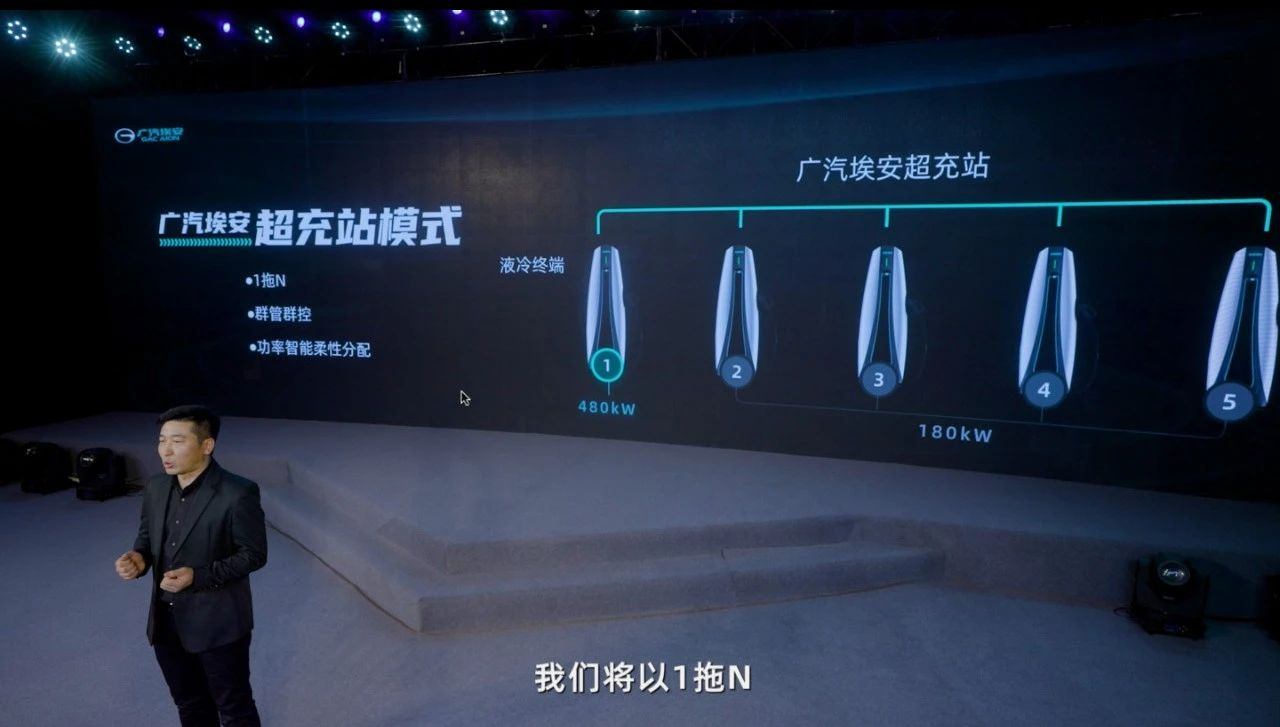
GAC Aion’s supercharger station model will adopt 1-to-N and group management and control mode, i.e., one 480 kW supercharger with N 180 kW superchargers, and the charging power can be intelligently allocated to meet the charging needs of different users.
As the saying goes, “Practice is the sole criterion for testing truth.”
To prove the truth of their statement, GAC Aion did a very bold thing: challenged the WRCA certification, i.e., the Guinness World Record. Moreover, GAC Aion also did a live broadcast, inviting the whole network to witness it.
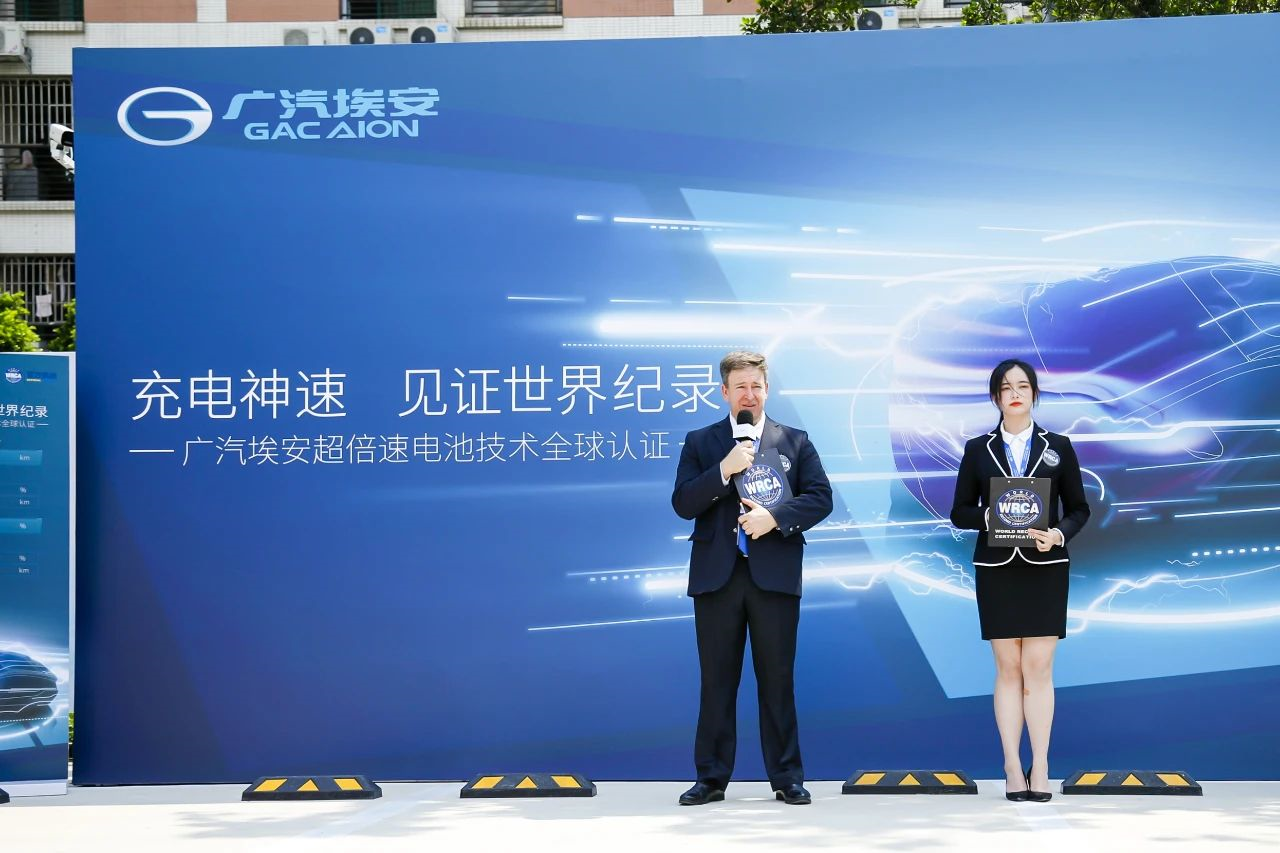 AION, equipped with hyper-charging battery technology, has not disappointed us. Certified by the world record certification officer, it has set a stunning record for the fastest charging speed ever achieved by an electric vehicle – 207 kilometers of range in just 5 minutes.
AION, equipped with hyper-charging battery technology, has not disappointed us. Certified by the world record certification officer, it has set a stunning record for the fastest charging speed ever achieved by an electric vehicle – 207 kilometers of range in just 5 minutes.
Accelerate the Hyper-charging Network Layout
It should be noted that this hyper-charging technology is not just in the experimental stage, but can be mass produced and applied.
Just yesterday (August 30th), the first 480kW high-power charging station of the Aion brand was officially completed and put into operation at East Hong International. The station adopts a 1:5 model, with one 480 kW and four 480 kW charging piles, which can achieve super-fast charging and meet the charging needs of five cars at the same time (PS: Currently, there should be no mass-produced car that can support such high hyper-charging power).
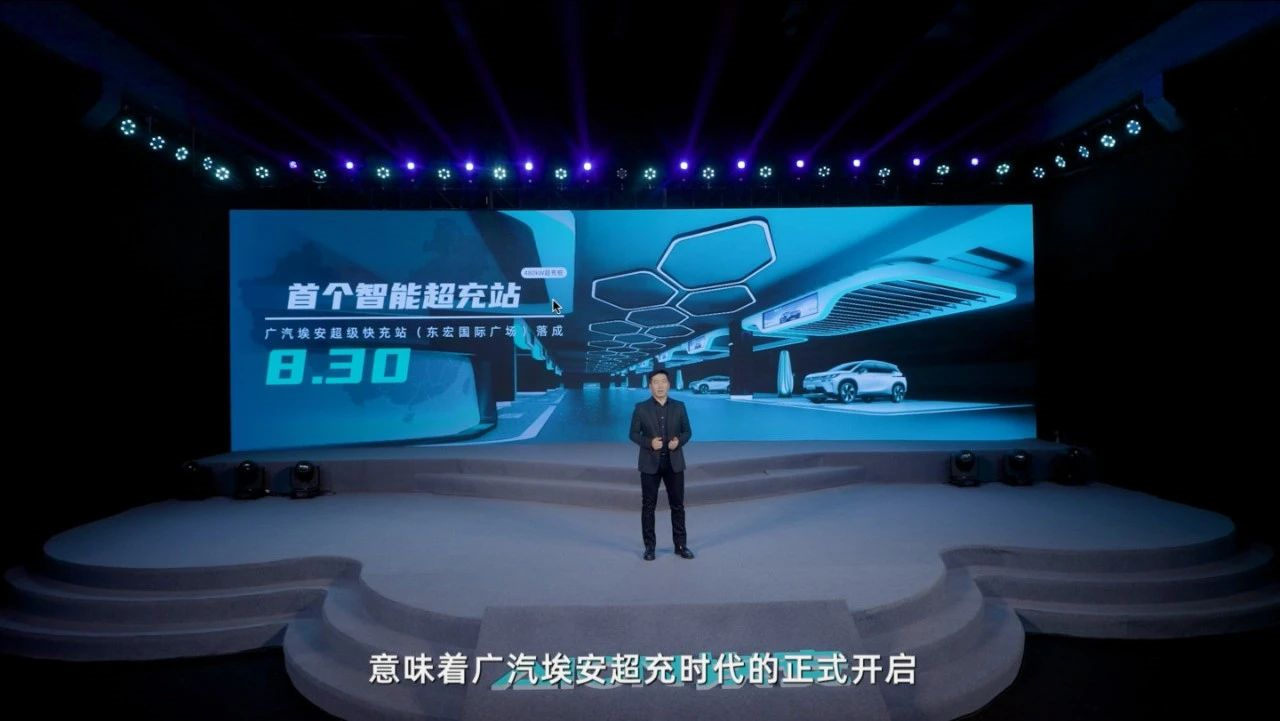
Next, GAC Aion will rapidly deploy the brand’s hyper-charging piles throughout the country. They will radiate surrounding economic areas from core cities of first- and second-tier cities and create hyper-charging networks such as the Greater Bay Area, Beijing-Tianjin-Hebei, Chengdu-Chongqing Economic Circle, and so on. They will also establish interprovincial travel routes such as Guangzhou-Beijing, Guangzhou-Shanghai, and Guangzhou-YunGui.
It is estimated that by 2025, GAC Aion will build 2,000 hyper-charging stations in 300 cities nationwide, covering prefecture-level cities for full coverage.
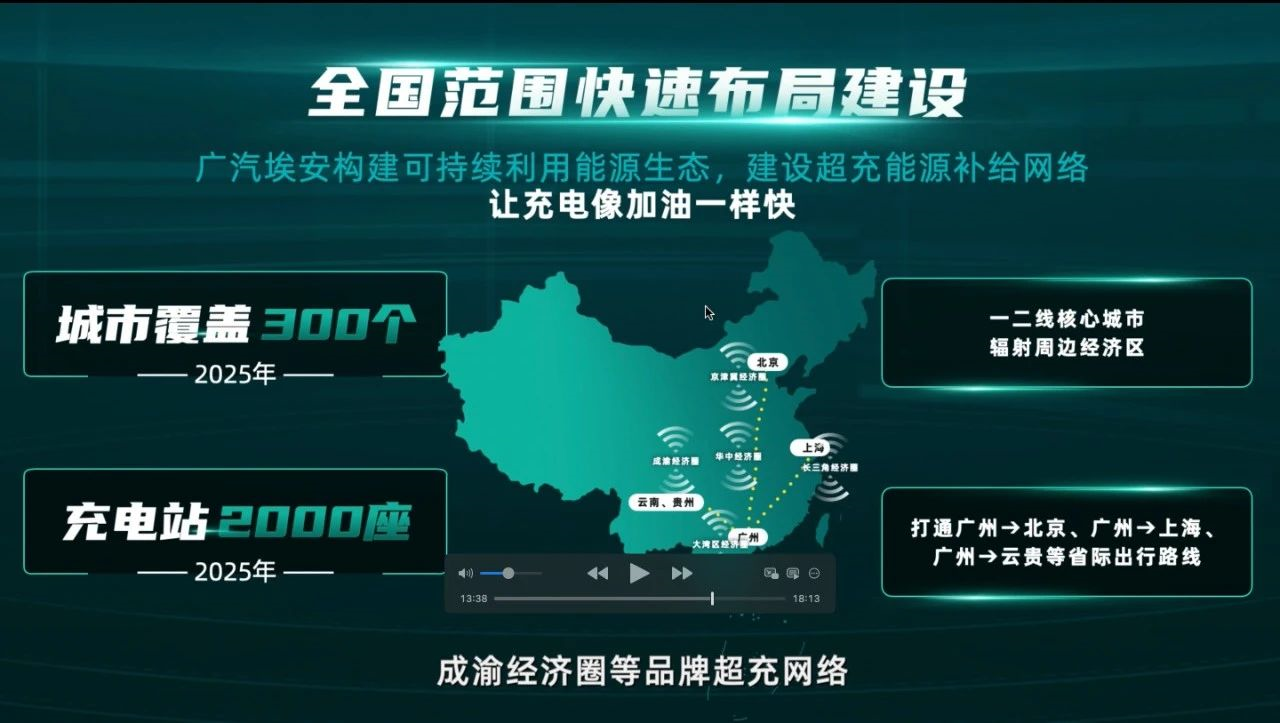
Let’s simply compare the hyper-charging layout of a few other companies:
-
Tesla: has built over 870 supercharging stations and 6,700+ supercharging piles. In addition, over 700 destination charging stations and 1,700+ destination charging piles have been built, covering more than 320 cities in China (data as of July 17th);
-
NIO: has deployed 204 hyper-charging stations, more than 1,600 charging piles, built 382 destination charging stations, and owns 2,137 destination charging piles (data as of July 9th);
-
Xpeng: has operated 231 brand hyper-charging stations in 65 cities. By the end of the year, it aims to have more than 500 brand hyper-charging stations (data as of the end of June).
In accordance with GAC Aion’s statement, it plans to deploy nearly 400 hyper-charging stations annually. That is to say, its annual deployment volume is close to or even exceeds the cumulative deployment volume of NIO and Xpeng over the years.
This speed is indeed impressive.
Conclusion
Overall, in order to solve the problem of energy replenishment, GAC Aion has come up with an impressive solution.Although 480 kW rapid charging, as seen today, may seem to be a bit excessive in terms of power, GAC Aion has demonstrated from a technical perspective that charging electric vehicles can be as convenient as refueling. This is a positive signal for the future popularization of electric vehicles.
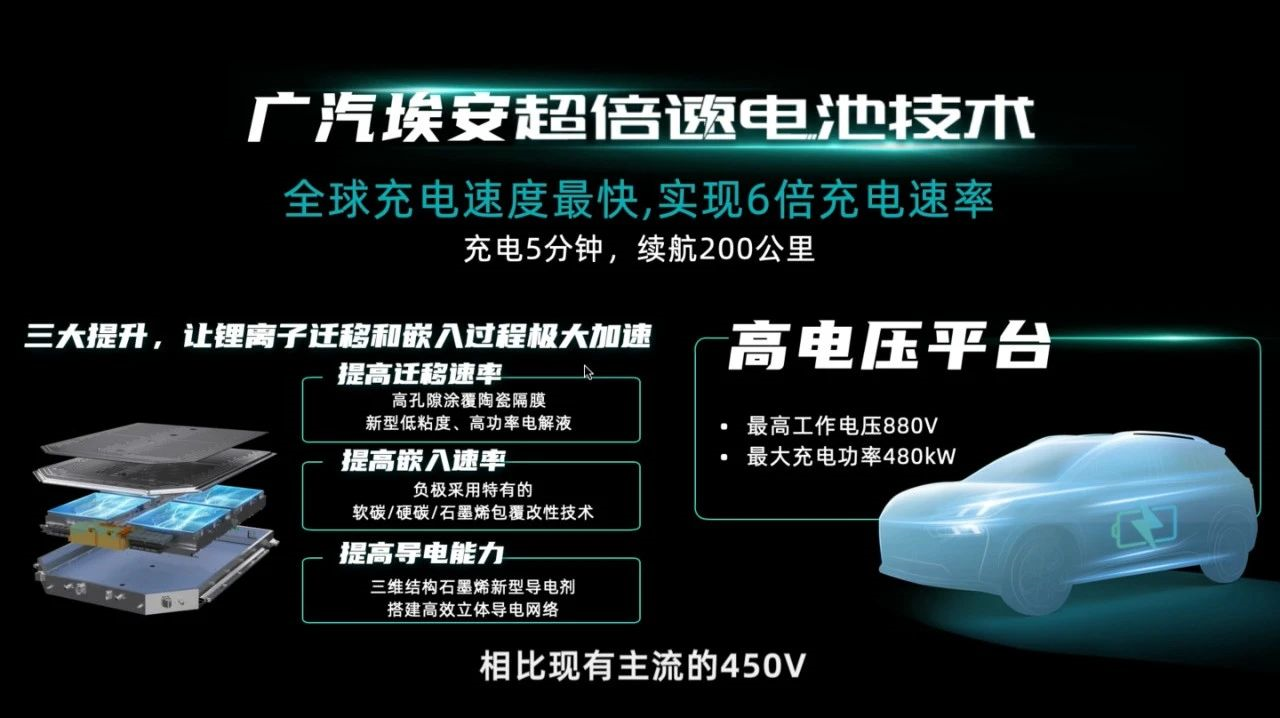
However, even so, we still have many questions about ultra-fast charging battery technology: first of all, such a fast charging speed actually affects the battery life, so what is the cycle life of batteries equipped with this ultra-fast charging technology? Will this technology be able to achieve mass production or only small-scale sales when it is put into use in vehicles later this year? What will be the pricing of relevant models?
These are all questions that GAC Aion needs to answer in the future.
This article is a translation by ChatGPT of a Chinese report from 42HOW. If you have any questions about it, please email bd@42how.com.
